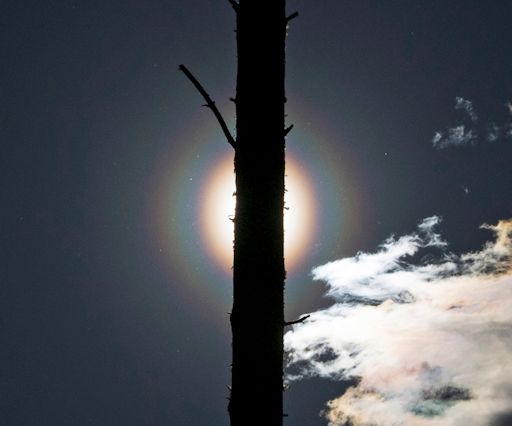POLLEN CORONAS
It begins with a sneeze. Pollen floating through the air tickles your nose, and your body responds by expelling the allergen. Gesundheit! When the paroxysm subsides, look up at the sky. The same pollen that makes you sneeze can also make beautiful coronas around the sun, like this one photographed on June 15th by Vesa Vauhkonen of Rautalampi, Finland :
photo: Vesa Vauhkonen of Rautalampi, Finland
"Pine is strongly flowering now in the middle Finland, and the coronas have been quite impressive over the past few days," says Vauhkonen. "But less impressive is the penetration of pollen everywhere--especially in the eyes and noses of people and animals. "
Atmospheric optics expert Les Cowley explains the phenonenon: "Coronas are produced when light waves scatter from the outsides of small particles. Tiny droplets of water in clouds make most coronas, but opaque equal-sized pollen grains do even better. They make small but very colorful multi-ringed coronas."
"Unlike water droplets, pollens are non-spherical--and this adds to their magic," he continues. "Many have air sacs to help carry them in the wind. These align the grains to give beautiful elliptical coronas with bright spots." This is why Vauhkonen's pollen corona looks the way it does.
As northern spring turns into summer, pollen coronas become increasingly common. Look for them the next time your nose feels a tickle.
Bron: http://www.spaceweather.com/ | Gewijzigd: 30 januari 2017, 14:13 uur, door Joyce.s

 Corona veroorzaakt door pollen
Corona veroorzaakt door pollen




